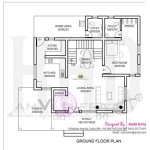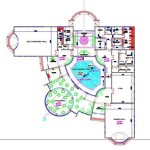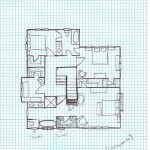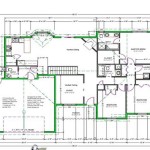How To Create A Seating Plan In Excel
Creating an effective seating plan is crucial for various events and environments, from classrooms and conferences to weddings and corporate events. A well-organized seating arrangement can enhance communication, collaboration, and overall comfort for attendees. While specialized software exists for seating plan design, Microsoft Excel offers a versatile and accessible platform for creating and managing seating arrangements efficiently. This article provides a comprehensive guide on how to leverage Excel's features to design and implement a seating plan tailored to specific needs.
Before embarking on the creation process, it is important to outline the objectives and constraints of the seating plan. Knowing the total number of attendees, the dimensions of the venue, and any specific grouping requirements is essential. These factors will influence the layout and the allocation of seats. Further considerations should include accessibility needs, sightlines to presentation areas or stages, and the potential for creating a balanced and inclusive atmosphere.
Setting Up the Excel Worksheet
The first step involves preparing the Excel worksheet to represent the venue and its seating arrangement. This will typically involve defining the rows and columns to correspond to the physical layout of the space. For a rectangular room, the rows might represent the length, and the columns might represent the width. The scaling should be adjusted to accurately reflect the actual dimensions of the venue, even if it's a symbolic representation.
Start by opening a new Excel workbook. Adjust the column width and row height to create a square or rectangular grid that visually represents the space. This can be done by selecting all cells (Ctrl+A) and then dragging the boundary of a row or column header to the desired size. A smaller cell size allows for more precise placement of tables and seats.
Next, define the boundaries of the venue by outlining the perimeter of the seating area. This can be achieved by applying borders to the relevant cells. Select the cells that correspond to the venue's shape and use the "Format Cells" option (right-click, then "Format Cells") to add a thick border around the selection. This visual demarcation helps in staying within the confines of the actual space.
Introduce placeholders for obstacles or fixed features within the venue, such as pillars, doors, or stage areas. These can be represented by merging cells and filling them with a distinct color or pattern. Label these obstacles clearly within the merged cells to avoid accidental placement of seating in those areas. For example, a large column could be depicted by a merged cell filled with gray and labeled "Column."
Consider representing tables as larger merged cells. The size of the merged cell should correspond to the number of seats allocated to each table. If the tables are round, visually approximate this with a square or rectangular merged cell. Add a border to each table cell for clarity. Numbering the tables sequentially (Table 1, Table 2, etc.) within these cells can also aid in organization and referencing.
Each individual seat can be represented by a cell within the table's merged cell. These can be left visually distinct or assigned identifiers later. This initial setup creates the foundation for placing attendees strategically.
Entering and Managing Attendee Data
Accurate and well-organized attendee data is paramount for efficient seating plan creation. A separate worksheet within the same Excel workbook should be dedicated to maintaining a list of attendees and their relevant information. This data should be comprehensive and include all factors that will inform seating decisions.
Create a new worksheet by clicking the "+" button at the bottom of the Excel window. In this worksheet, establish columns for essential attendee information. Minimally, include columns for "Name," "Table Number" (initially blank), and "Notes." The "Notes" column can be used to record dietary restrictions, accessibility requirements, or any other pertinent information that influences seating arrangements. Additional columns might include affiliation (e.g., department, company), relationship to other attendees, or any preferences that have been communicated.
Enter the attendee data into the respective columns. Ensure consistency in data entry to avoid errors during sorting and filtering. For example, be consistent with the formatting of names (e.g., "Last Name, First Name" or "First Name Last Name"). Consider using data validation to restrict the type of data entered into certain columns. For instance, the "Table Number" column could be set to accept only numerical values within a defined range.
Leverage Excel's sorting and filtering capabilities to arrange the attendee list based on specific criteria. For example, the list can be sorted alphabetically by last name, or filtered to display only attendees with specific dietary restrictions. This allows for easier identification of groups or individuals who should be seated together or kept separate.
Use conditional formatting to highlight entries that meet specific criteria. For instance, all attendees with mobility issues could be highlighted in a specific color. This visual cue helps ensure that accessibility requirements are taken into account during seat assignment.
The attendee data sheet serves as a central repository for all relevant information and can be easily updated as needed. Regularly review and update the data to ensure accuracy before finalizing the seating plan.
Assigning and Visualizing Seats
With the venue layout and attendee data prepared, the next step involves assigning attendees to specific tables and visualizing the seating arrangement. This process requires careful consideration of the various factors outlined earlier, such as group affiliations, accessibility needs, and overall balance.
Return to the worksheet representing the venue layout. Begin assigning attendees to tables based on their characteristics and preferences. Manually enter attendee names into the individual seat cells within each table's merged cell. As names are assigned, update the "Table Number" column in the attendee data sheet to reflect the table number to which they have been assigned. This ensures that both worksheets are synchronized.
Use color-coding to visually differentiate groups or categories of attendees within the seating plan. For example, attendees from the same department could be assigned a specific background color in their respective seat cells. This visual representation allows for quick identification of group dynamics and helps ensure a balanced distribution of attendees across tables.
Excel's "VLOOKUP" function can be used to automatically populate attendee names in the venue layout worksheet based on their assigned table number in the attendee data sheet. This eliminates the need for manual data entry and reduces the risk of errors. The VLOOKUP function searches the attendee data sheet for the attendee's name based on their table number and returns the corresponding name to the seat cell in the venue layout.
Continuously review and adjust the seating plan as needed. Experiment with different seating arrangements to find the optimal configuration that meets all requirements. Use Excel's drag-and-drop functionality to easily move attendees between seats or tables. Pay close attention to sightlines, accessibility, and the overall flow of the event or environment.
Once the seating plan is finalized, consider adding a legend to the venue layout worksheet that explains the color-coding scheme or any other visual cues used. This legend will help others understand the seating arrangement and ensure that the plan is implemented correctly.
Finally, print or save the seating plan in a format that can be easily shared with attendees, staff, or other stakeholders. Consider creating multiple versions of the seating plan, such as a large-format print for the venue entrance and individual table assignments for each attendee. The printed plan should be clear, concise, and easy to understand.
By following these steps, one can effectively create and manage a seating plan in Microsoft Excel, ensuring a well-organized and comfortable environment for all attendees. The flexibility and accessibility of Excel make it a valuable tool for a wide range of seating plan scenarios.

Microsoft Excel 02 Create A Seating Chart

Seating Chart Planner Excel Hash Episode 3 Campus

Seating Chart Planner Excel Hash Episode 3 Campus

Seating Chart Planner Excel Hash Episode 3 Campus

Excel Seating Plan With Charts Contextures Blog

How To Create A Seating Chart For Wedding Or Event Microsoft Office Template

Seating Chart Planner Excel Hash Episode 3 Campus

Banquet Table Seating Planner

Create Your Seating Chart With Microsoft Office And Perfecttableplan

Plan Your Party Seating With Excel Contextures Blog








